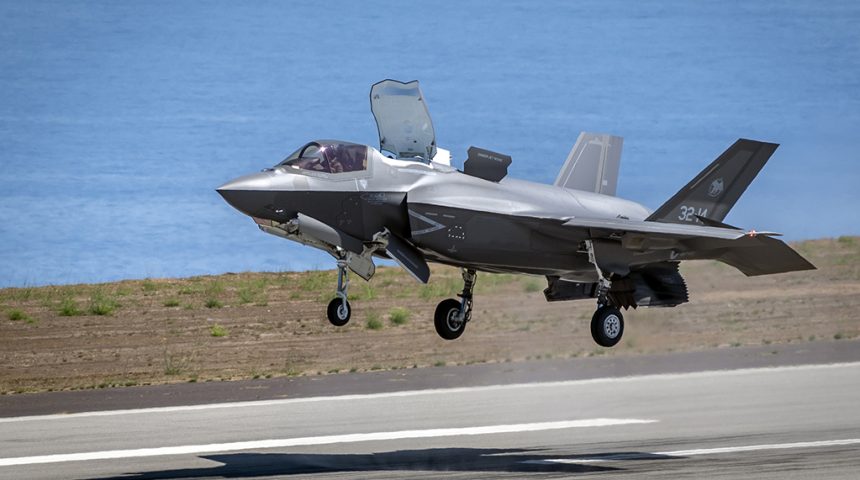The first F-35B STOVL (Short Take Off Vertical Landing) aircraft of the Aeronautica Militare (Italian Air Force) was the highlight of an exercise held at Pantelleria airport.
On Jul. 30, 2020, the Italian Air Force presented its capability to use short runways and project power on very short notice from forward operating locations as part of an “Expeditionary” PoC (Proof of Concept) held at Pantelleria, the tiny island located in the Strait of Sicily in the Mediterranean Sea, some 100 km (62 mi) southwest of Sicily and 60 km (37 mi) east of the Tunisian coast.
The exercise saw the participation of the first F-35B STOVL aircraft of the Italian Air Force, the airframe serialled MM7453/32-14: the goal of the PoC was to deploy an F-35B aircraft to the Pantelleria airport with accompanying operational/technical-logistical support, in order to demonstrate the ability of the air force to project and use the 5th generation aircraft far from home, in a semi-permissive environment, on an austere/bare runway normally not usable by other conventional aircraft and with limited Force Protection provided by the host nation.
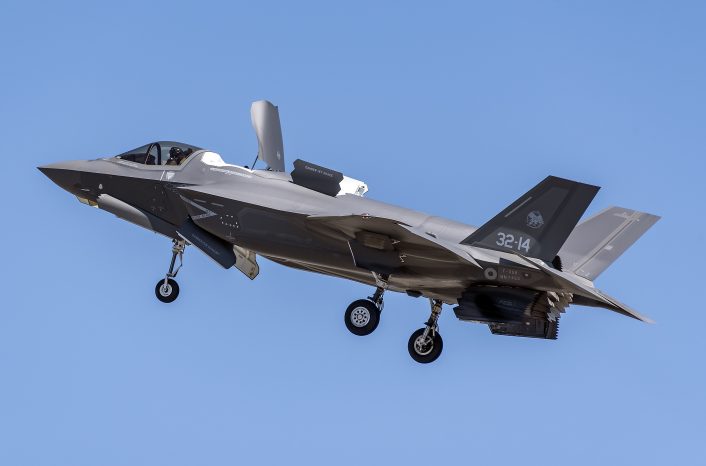
For this reason, the drills involved several units of the Italian Air Force: the F-35B of the 32° Stormo (Wing) from Amendola Air Base was supported on its way to Pantelleria by a KC-130J tanker. The landing area was surveilled by an MQ-9A Predator B (also from the 32° Stormo) that streamed live imagery to the “Combat Controllers” (Italian Air Force Raiders of the 17° Stormo) whose role was to take over the control of the airfield and provide coordination and control of the flying activity. The Air Riflemen of the 16° Stormo, provided the Force Protection of the deployed personnel and assets.
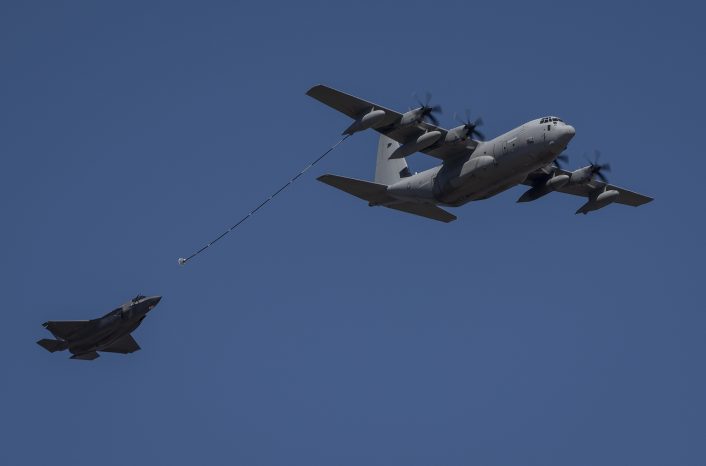
As part of the PoC, after performing a short landing, the F-35B was refueled on the ground directly from the KC-130J tanker aircraft using the Air Landed Aircraft Refuelling Point (a special system providing simultaneous refueling on of up to 4 aircraft by pumping fuel from the KC-130’s tanks) and was armed in a very short time before taking off again; an activity that saw the involvement of the RSV (Reparto Sperimentale Volo – Italian Air Force Test Wing), because it had never been carried out operationally before.
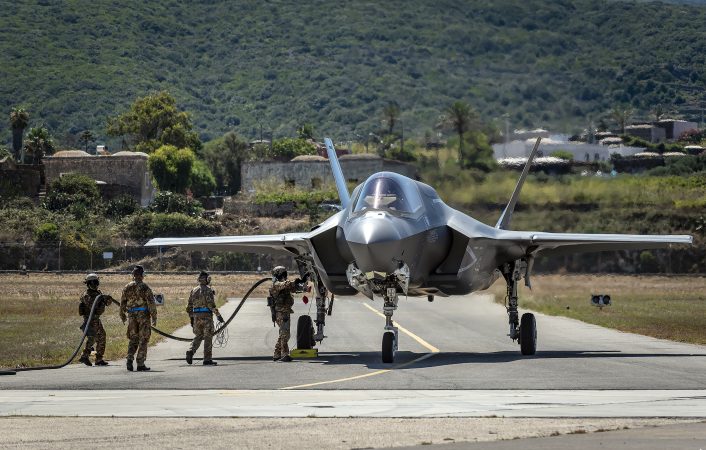
“The F-35B is probably the most eye-catching, considered that it is the first time you see it, but it represents just one of the elements of a larger expeditionary system that makes the Air Force capable to project power; a capability that not only is important for the Air Force, but for the whole nation” said Lt. Gen. Rosso, Italian Air Force Chief of Staff during the media briefing of the exercise. “This kind of exercise has a technical relevance, as it allows us to train and prepare all the components that are needed to conduct expeditionary operations: we can fix minor issues that a new capability brings and find the right integration between all the players. Moreover, from a strategic point of view, we can demonstrate that the Italian Air Force is among the few air arms in the world to be able to express an aerospace power projection capability: we are not only able to operate from home, from our usual airbases; we are able to operate from other airbases that already make the logistics and support available; and we are able to project, when and if needed, our capabilities, in an autonomous way. It’s an important capability that we are really proud of.”
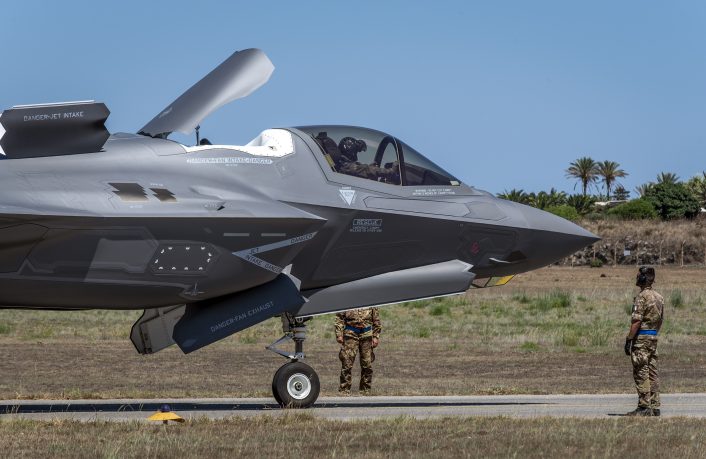
“This capability is extremely important to face new scenarios or situations like the one we had during the Gulf War”, added Rosso. “Our Tornado jets were deployed to an airbase [Al Dhafra Air Base, UAE] that was far away from the area of operations: this implied that our aircraft had to fly several hours and carry out several aerial refuelings before reaching their targets. The ability to operate from shorter runways can allow the selection of a closer airbase and solve the problem. In terms of flexibility, just think that in Africa there are about 100 runways that have a length between 2,800 and 3,000 meters but there are 20 times as many runways between 1,000 and 1,500 meters in length. Being able to use short runways allows you to multiply your ability to deploy where needed, in a more convenient and faster way, especially closer to the area of operation. Having an aircraft that is capable of taking off from shorter runways allows incredible flexibility even in those scenarios that are currently only barely conceivable. In case of conflict, aircraft that are able to operate from shorter runways can also be dispersed to increase their survivability. This flexibility to operate from bare/austere runways or even highways makes the air power more unpredictable and represents a fundamental capability in any scenario. For this reason, after carefully studying all the scenarios and costs, the Italian Air Force has identified, as done by other air arms, a mixed fleet of F-35A and B aircraft, as the most economically convenient and effective configuration.”
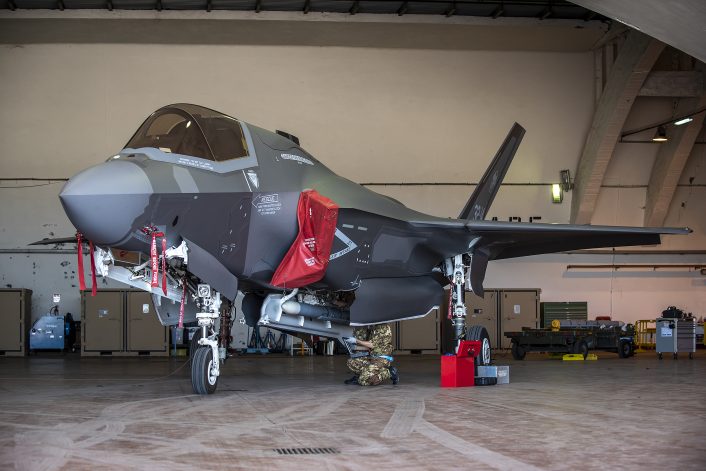
When asked about the possible creation of a joint management of the F-35B fleet between the Italian Air Force and Navy, Rosso said: “This is one of the things we are discussing. I believe that a joint capability is important regardless of the machine and the systems you use. I think nobody can afford to work alone, but we have to do teamwork, because we are a single defense tool at the service of the country. Beyond what may be some controversies, as reported in the newspapers, I think there is the awareness and desire to make each one’s own competence and skills available to the country in a synergistic way. It is clear that the F-35B is an aircraft that has great flexibility and is capable of solving a series of problems or addressing a series of needs of both the Navy and, in my opinion even more, the Air Force. Being able to put together the skills and experiences that the individual Armed Forces are able to make available, respecting the tasks of each, I think is something the whole country will benefit of. I trust that this will be the direction in which we will move, without any service wanting to override the other, respecting the prerogatives of each armed force. I think working together for a single goal as a single Armed Force is a duty towards the taxpayer.”
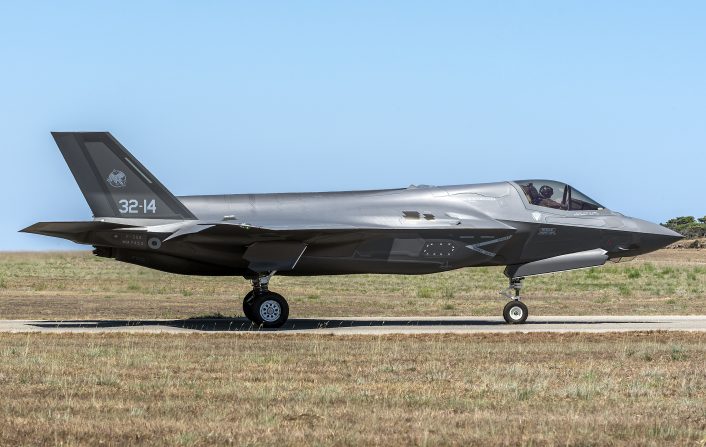
In order to understand what’s the status of the F-35B program and the controversies Rosso referred to, I suggest you reading the article this Author wrote in February 2020 (here’s a short exerpt):
The Italian Government is currently procuring 90 F-35s, 60 of those are F-35As and the remaining 30 ones are F-35Bs. Out of those 30 F-35Bs, 15 will go to the Navy and 15 to the Air Force. The Lightning II will replace the Navy’s ageing AV-8B+ Harrier II and will be embarked on the Cavour aircraft carrier and the new LHD Trieste. It is not completely clear, however, where the F-35s will be land-based.
The Gruppo Aerei Imbarcati “Wolves”, which will operate the F-35B within the Navy, is currently based in Grottaglie, close to the naval port of Taranto, home to the Cavour aircraft carrier [and to the Trieste landing helicopter dock (LHD), in the future]. However, according to some reports, the Italian Defense Chief of Staff has already identified Amendola Air Base, the MOB (Main Operating Base) of the F-35A within the ItAF (about 100NM northwest of Grottaglie), as the national MOB for both the CTOL (Convetional Take Off and Landing) and STOVL (Short Take Off Vertical Landing) versions of the Lightning II. This should prompt the relocation of the “Wolves” to Amendola, creating a joint Air Force/Navy flight line with common logistics and training, even though it would practically mean that the entire force would mostly be under Air Force control.
With both Italian Air Force’s and Navy’s F-35Bs based at Amendola AB, the Italians would replicate the British model that sees RAF Marham as MOB for a jointly manned “Lightning Force” made of Air Force (with the 207 and 617 squadrons) and Navy (with the 809 Naval Air Squadron that will be re-established in 2023) personnel, sharing aircraft, equipment and support infrastructures. The creation of an Italian Joint Lightning Force makes much sense: aircrew training, maintenance and at least part of the logistics could be concentrated in one place, with some significant savings. And if the selected base is Amendola, the Italian Joint Force could leverage at least some of the infrastructures built there to accommodate the Lightning. Indeed, preparation to host the F-35 in Amendola started in 2012 and today the “F-35 citadel” is literally a “base inside the base” with modern shelters and buildings located inside an access-controlled restricted zone created to isolate the 13° Gruppo’s area from the rest of the base. It must not be forgotten tha the advent of the F-35 has induced the Italian MoD to adopt tighter security measures than those in place before the arrival of a 5th generation technology and this becomes pretty evident if you think that all the photographs taken inside Amendola, must be reviewed one by one by security personnel so that no sensitive detail would be leaked. For sure, making Grottaglie ready for the F-35B would cost a lot of money and time, considered that the works to prepare the base for the Joint Strike Fighter were halted a couple of years ago.
As a side note, while it explores the capabilities of the new F-35B with the support of the RSV, the 32° Stormo continues to grow its experience with the F-35A it first received in 2016: the Wing’s child unit, the 13° Gruppo (Squadron), that achieved the IOC (Initial Operational Capability) in Nov. 2018, has just successfully completed their second tour of duty in support of NATO’s Icelandic Air Policing mission, dubbed Operation Northern Lighting II.
A special H/T goes to our friend and contributor Giovanni Colla, who shot all the photographs you can find in the article and for providing additional details about the PoC. Many thanks to the Italian Air Force for inviting us to this interesting event.

